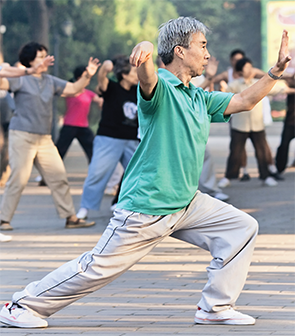
Image Credit: TonyV3112/shutterstock.com
Fibromyalgia syndrome (FMS) is a condition characterized by widespread pain, abnormal pain processing, sleep disturbance and fatigue. It is commonly associated with psychological distress and co-morbid conditions. Impaired cognition is common in individuals with FMS, and is often referred to as fibrofog.1 According to the U.S. Centers for Disease Control and Prevention, the prevalence of FMS is 3.4% in women and 0.5% in men.2 The 2010 ACR preliminary diagnostic criteria are used for clinical diagnosis and severity classification of FMS.3 Diagnosis is based on the following criteria:3
- Widespread Pain Index (WPI) >7 and a symptom severity scale (SS) >5 or WPI 3–6 and SS >9;
- Symptoms have been present at a similar level for at least three months; and
- The patient does not have a disorder that would otherwise explain the pain.
There is no cure for fibromyalgia, and management of patients with FMS is aimed at reducing symptoms and optimizing function. Ideal treatment encompasses both non-pharmacological and pharmacological strategies, with emphasis on maintaining function and patients playing an active role in their care.4
According to the 2012 Canadian Guidelines for Management of FMS, regular physical activity should form the cornerstone of treatment, and this approach received the highest grade of recommendation.4
The Ottawa Panel Evidence-Based Clinical Practice Guidelines for the Management of FMS recommend both aerobic exercises and strengthening exercises.5,6 The Ottawa panel review included 16 studies of a variety of aerobic fitness interventions.5 These aerobic exercise interventions were found to result in improvements in a variety of outcomes, including: pain relief, psychological well-being, endurance, anxiety, self-efficacy, depression, quality of life, muscle strength, cardio respiratory fitness, physician general awareness and flexibility.
The Ottawa Panel, in a review of five selected randomized controlled trials, also found that strengthening exercises resulted in clinical benefits in muscle strength, pain relief, physical disability, depression and quality of life at end of treatment at 12 weeks.6
Similarly, a study by García-Martínez et al compared 12 women with FMS who completed a 12-week program of combined aerobic, strength and flexibility exercise with a usual care control group.7 They found the exercise program was effective in improving functional capacity and psychological status. Plus, subjects in the exercise group experienced benefits in self-esteem and self-concept, which were related to gains in health-related quality of life.
Due to the nature of FMS, individuals with this condition are generally less physically active, having lower perceived functional ability, and demonstrate impaired functional performance.1,8 The main reason for reduced fitness in individuals with FMS is thought to be their lowered overall activity level.9 However, an exercise approach that is too vigorous will result in increased pain and fatigue for individuals with FMS. Therefore, to gain optimal benefits from exercise and ensure long-term adherence, care must be taken to prevent exercise-related pain and discomfort and adverse effects related to exercise such as musculoskeletal injury and fatigue.1 A carefully graded, individualized and gradual intensity progression for deconditioned individuals with fibromyalgia toward “moderate” intensity is recommended.
